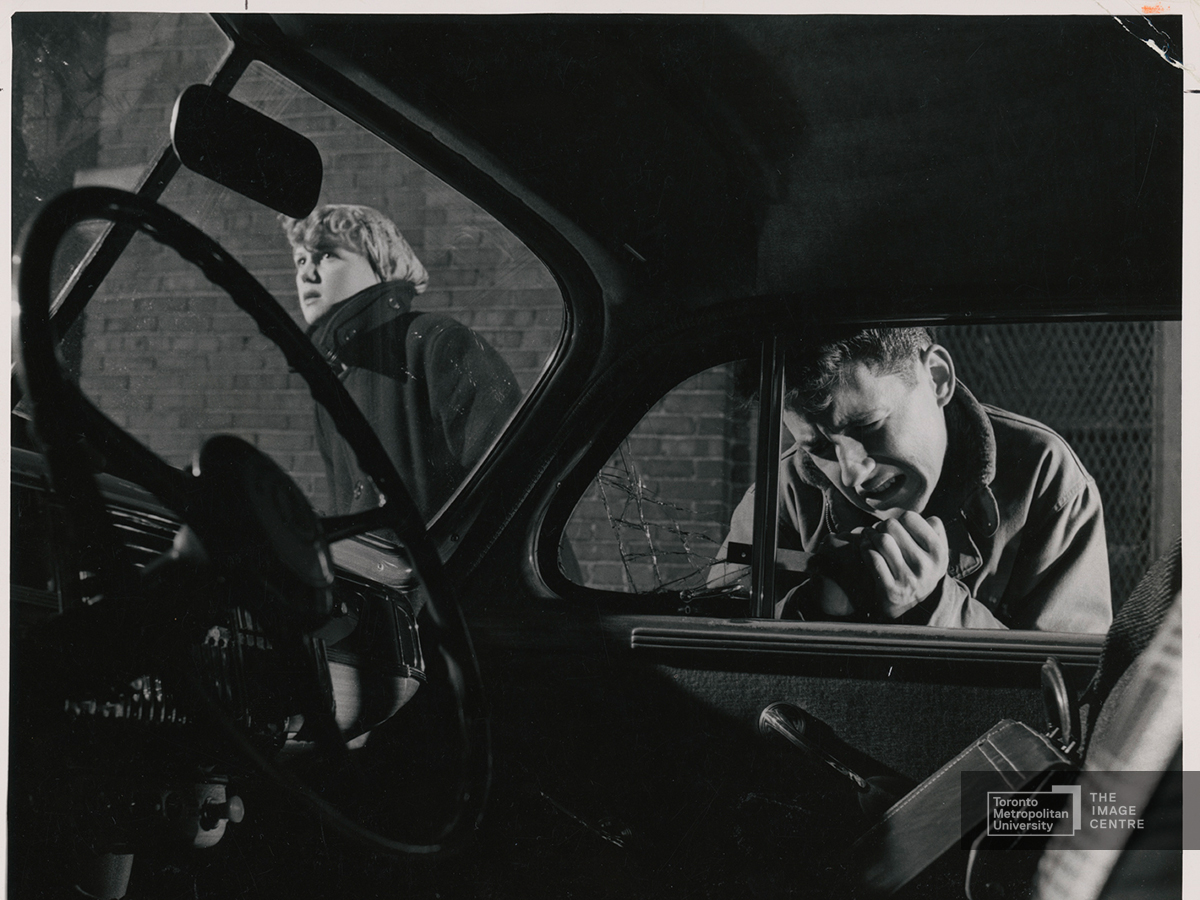Car Robbery
Social Process Theories
Social Learning Theory: learning to break into cars occurs in the same way as learning to play baseball – someone teaches you.
Title: Unknown.
Object Type: photograph
Dimensions: 8 x 10 inches; 20.32 x 25.4 cm
Medium: gelatin silver print
Date: n.d.
Location: unknown
Accession No: BS.2005.267545
Photographer: Joe Covello.
Category: The Black Star Collection, Toronto Metropolitan University. Courtesy of The Image Centre.
Inscriptions: Recto, [no inscription]; Verso, handwritten: Car Robbery (This Week); stamped: [star] / Credit: / JOE COVELLO / from Black Star

Museum Label by Natasha McMillan, CR8002 : Critical Engagement and Criminological Theories, Winter 2020
Joe Covello specialized in photojournalism, capturing photographs and creating photo stories.
Covello travelled worldwide when working for Black Star, shooting for a variety of well-known magazines including Cosmopolitan, Life, Look, and Colliers, and photographed for Judy Garland and the Beatles, among other celebrities. Most of Covello’s photographs are dated during World War II and between 1946 and 1967.
Between 1964 and 1966, Covello came up with a new technique for producing still-photo projection presentations, which he called ‘moving stills’. This involved the use of a motorized camera to capture images, followed by the extraction of every fourth image. A sequenced projection of these images would allow for the illusion of motion.
As dusk falls on an unknown city in late autumn, delinquent acts can be seen coming to fruition.
This image depicts two adolescent males breaking into a motor vehicle. One adolescent (right) can be observed holding a slim metal object that is being used to break the front passenger side window of the car. The second adolescent (left) scans their surroundings, watchful of any onlookers or police officers who might catch them in the act. It would be rare to observe an adolescent acting alone in this, for most adolescents act together when breaking the law, or, as one might say, have a ‘partner (or partners) in crime’. One cannot commit a crime without receiving knowledge from others for how to behave.
At a time where peers play an important role in an adolescents’ life, spending much time with friends who engage in and encourage delinquent behaviour may lead to one joining in as well. On the passenger seat sits a briefcase, the object that the adolescents are set on stealing. In their minds, there is much to be gained from engaging in this illegal act, as perhaps money or other valuables are inside the briefcase. The presence of an encouraging friend (left), allows the adolescent (right) to feel okay with, and follow through with his actions as he attempts to retrieve the briefcase. If successful, this will unlikely be the last time that these adolescents attempt to pull off a stunt like this, for the valuables and excitement gained fuels positive feelings toward engaging in crime.
The location of this image is unknown; however, some environments create greater vulnerability toward engaging in crime. It is possible that this location, where the adolescent boys have grown up, have shaped how they feel toward, and are reacted to by others in participating in this delinquent act.
Bibliography
- Chapnick, H. (1994). Truth needs no ally: Inside photojournalism. Colombia, Missouri: University of Missouri Press.
- Poster Prints. (1969). Joe Covello, Photographer. (Photograph). Retrieved from the WorthPoint (external link, opens in new window)